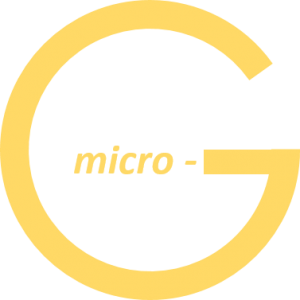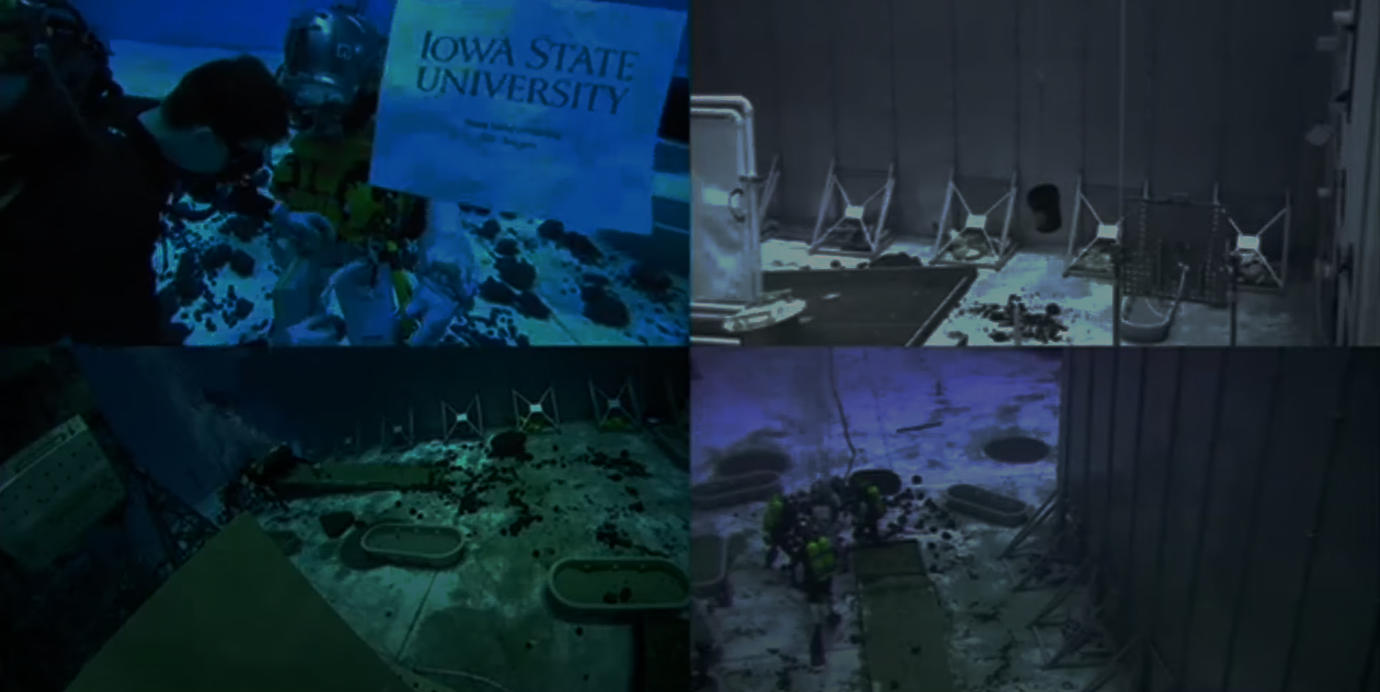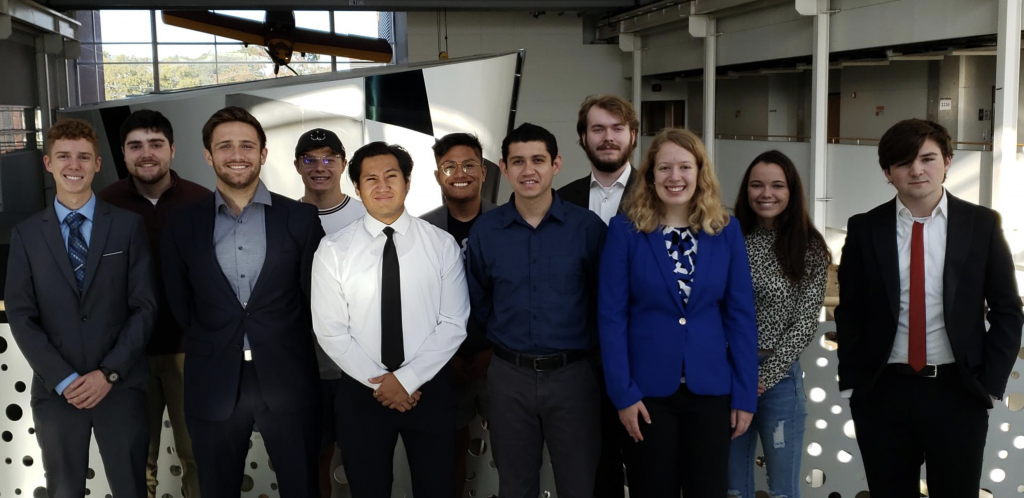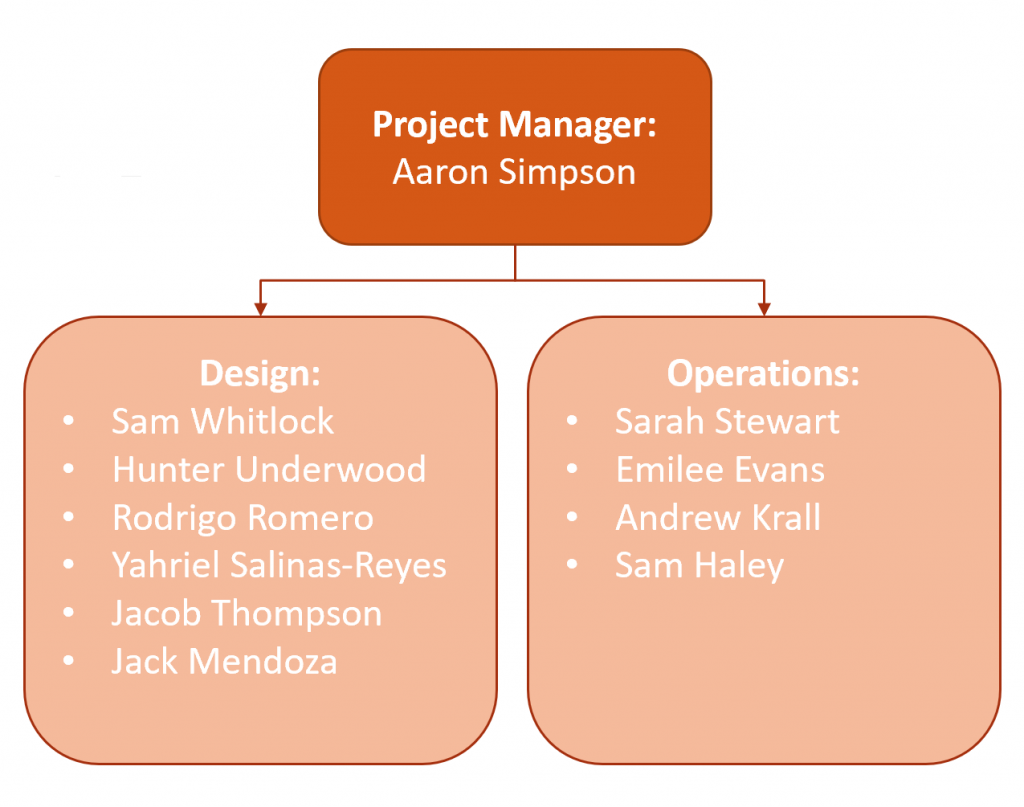
M2I: Micro-G
ISU Student-Led NASA Competition Team


Micro-g’s mission is to develop tools for NASA that would be useful in advancing space exploration and can function in microgravity environments. These tools are intended for various applicable space exploration uses, most notably lunar expeditions by astronauts in the upcoming Artemis missions. The ultimate goal is to generate new technology and ideas that could be used to better fulfill NASA’s space research and exploration goals.

People (Left to Right) Aaron Simpson, Sam Haley, Andrew Krall, Hunter Underwood, Yahriel Salinas-Reyes, Jack Mendoza, Rodrigo Romero, Jacob Thompson, Sarah Stewart, Emilee Evans, Sam Whitlock
Micro-g is split into two distinct teams: Design and Operations. Design Team tasks focus on developing a detailed design based upon initial ideation and brainstorming, creating a computer model of the design, and planning the manufacturing methods for the design. The Operations Team is responsible for documentation, planning and organizing outreach opportunities, managing the team’s online and public presence, securing funding, and the most important task of all: the project proposal sent to NASA with the accompanying one-minute concept pitch video.

Faculty Advisor: Tomas Gonzalez-Torres
Technical Advisors: Luke Gordon & Tomas Gonzalez-Torres
NASA Mentor: TBD
The objective of Micro-g is to brainstorm, design, build, and test microgravity tools for future use by the National Aeronautics and Space Administration (NASA). To do this, the team participates in the NASA Microgravity Neutral Buoyancy Experiment Design Teams (Micro-g NExT) Artemis Student Challenge. For the 2021-22 challenge, the team is developing a reusable multi-surface anchoring mechanism to be used by future astronauts on the Moon and in other areas of space exploration to help NASA conduct research. The device must meet given challenge constraints, and the team will submit a design proposal document to NASA in October 2021 for further selection consideration. Should the team’s proposed design be selected by NASA to continue in the challenge, the team will manufacture a prototype in Spring 2022 to be tested by professional divers at the Neutral Buoyancy Laboratory (NBL) at the Johnson Space Center in Houston to prove the tool can function in a microgravity environment similar to the Moon. A secondary objective of Micro-g is to conduct STEM outreach as a portion of the competition.

Finalized design
CAD (Computer-Aided Design) model of design
Manufacturing plan
BoM (Bill of Materials)
Completed design safety and failure analysis
Simple prototype to demonstrate design concept
NASA proposal document
Concept pitch video
Iowa Space Grant Consortium funding request form
Finalized outreach plan
Make to Innovate presentations and posters
Updated website and social media
